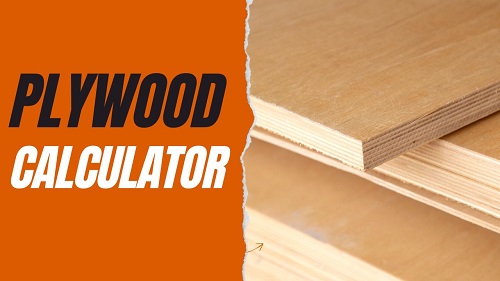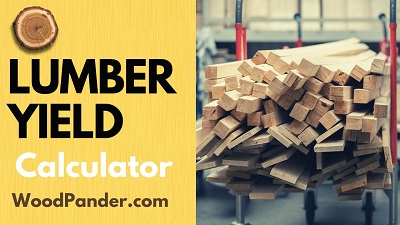For any woodworker, the goal is to produce high-quality pieces with minimal waste in the shortest time possible. The Cutting List Calculator is an innovative tool that can help woodworkers achieve this goal.
It is designed to optimize material usage, making it an indispensable tool for those in the woodworking industry. Whether you are a seasoned professional or just starting out, this tool will help you to save time and make more accurate cuts, making your projects faster, easier, and more efficient.
| Feature | Description |
|---|---|
| Material Optimization | Advanced cutting list calculators optimize material usage, minimizing waste and reducing costs. They consider factors such as yield optimization, blade kerf allowances, and joinery techniques for efficient material planning. |
| Customizable Inputs | Cutting list calculators allow users to input project-specific details, such as material dimensions, quantities, and joinery techniques. This customization ensures accurate results tailored to the specific project requirements. |
| Accurate Measurements | Cutting list calculators provide precise measurements for each cut, ensuring accuracy and minimizing errors during the cutting process. This helps woodworkers achieve precise and consistent results in their projects. |
| Stock Material Management | Advanced cutting list calculators take into account the available stock materials, allowing woodworkers to efficiently utilize the materials on hand and avoid unnecessary waste. This helps in optimizing material usage and reducing costs. |
| User-Friendly Interface | Cutting list calculators are designed with a user-friendly interface, making them easy to navigate and use. They often provide step-by-step instructions and visual representations of the cutting layout for ease of understanding and implementation. |
| Time-saving | By automating the material planning process, cutting list calculators save time for woodworkers. They eliminate the need for manual calculations and adjustments, allowing woodworkers to focus on the actual cutting and assembly of the project. |
| Cost-effective | Efficient material planning using a cutting list calculator can help woodworkers save on material costs by minimizing waste and optimizing material usage. This can result in cost savings and increased profitability for woodworking projects. |
| Flexibility | Cutting list calculators can handle various types of woodworking projects, from simple to complex. They can be used for projects such as furniture making, cabinetry, woodworking crafts, and more. |
| Accuracy | Cutting list calculators provide precise measurements and calculations, reducing the risk of errors and ensuring accurate cuts. This helps in achieving precise and professional-looking results in woodworking projects. |
| Resource Management | By optimizing material usage, cutting list calculators contribute to responsible resource management in woodworking. They minimize waste and promote sustainability by utilizing materials efficiently, reducing the impact on the environment. |
One of our articles –Screw Size Calculator For Woodworking.
| Length | Width | Quantity |
|---|
Importance of Cutting List Calculator for Woodworkers
Woodworking is a craft that requires precision and accuracy in cutting materials to create beautiful and functional pieces. One crucial aspect of woodworking is creating a cutting list, which outlines the dimensions and quantities of materials needed for a project.
This task can be time-consuming and complex, especially for projects with multiple pieces and intricate joinery techniques. This is where a cutting list calculator can be a game-changer for woodworkers.
Simplifies Material Planning
A cutting list calculator simplifies the material planning process by automating the calculations needed to determine the quantities and dimensions of materials required for a project.
By inputting the project details such as the dimensions of the pieces and the type of joinery used, the calculator generates a comprehensive cutting list that provides accurate measurements for each piece.
This eliminates the need for manual calculations, reducing the chances of errors and ensuring precise material planning.
Optimizes Material Usage
Efficient material usage is critical in woodworking to minimize waste and cost. A cutting list calculator takes into consideration factors like stock material dimensions, blade kerf, and yield optimization to generate a cutting list that optimizes material usage.
It helps woodworkers make the most efficient use of materials, resulting in reduced waste and cost savings.
Increases Accuracy in Cuts
Accurate cuts are crucial in woodworking to ensure that the pieces fit together perfectly and result in a high-quality finished product.
A cutting list calculator provides precise measurements for each piece, taking into account any joinery techniques and allowances for blade kerf.
This helps woodworkers make accurate cuts, reducing the chances of mistakes and rework.
Saves Time and Effort
Creating a cutting list manually can be time-consuming and labor-intensive, especially for complex projects.
A cutting list calculator automates the calculations and generates a cutting list quickly and efficiently, saving woodworkers valuable time and effort.
This allows them to focus on the actual woodworking tasks and complete projects more efficiently.
Provides Advanced Features
Many cutting list calculators offer advanced features that can further enhance the material planning process. For example, some calculators can optimize the cutting list for yield, considering the best way to arrange the pieces on the stock material to minimize waste.
Others can account for blade kerf, which is the width of material removed by the saw blade, to ensure accurate cuts. These advanced features can greatly improve the efficiency and accuracy of the material planning process.
How Cutting List Calculator Works
Cutting list calculators work based on algorithms that take into account the dimensions of the project and available stock materials to generate an optimized cutting list.
These calculators use mathematical formulas to calculate the most efficient way to cut materials, taking into consideration factors such as stock material size, grain direction, and the desired dimensions of the finished project.
Some cutting list calculators also provide visual representations of the optimized cutting list, making it easier for woodworkers to understand and follow.
Benefits of Using a Cutting List Calculator
Using a cutting list calculator offers several benefits to woodworkers.
- Optimized material usage: Cutting list calculators help in optimizing material usage by providing the most efficient way to cut materials, reducing waste and maximizing the utilization of available stock materials.
- Time and cost savings: By generating optimized cutting lists, cutting list calculators save time and costs associated with measuring and calculating materials manually, reducing the chances of errors.
- Increased efficiency: Cutting list calculators streamline the woodworking process by providing accurate and optimized cutting lists, enabling woodworkers to work more efficiently and complete projects faster.
- Improved accuracy: Cutting list calculators ensure accuracy in measurements and cuts, resulting in precise and high-quality woodworking projects.
- Reduced waste: By optimizing material usage, cutting list calculators help in reducing waste and environmental impact, making them a sustainable choice for woodworking projects.
Using a cutting list calculator is a straightforward process. Follow the steps below to make the most out of this valuable tool:
Step 1: Gather project information – Collect all the necessary information about the woodworking project, including the dimensions of the materials needed and the available stock materials.
Step 2: Choose a cutting list calculator – There are various cutting list calculators available online, ranging from simple to advanced ones. Choose the one that suits your needs and preferences.
Step 3: Input project details – Enter the dimensions of the materials needed for the project, including the length, width, and thickness of each piece, into the cutting list calculator. Some calculators may also require additional information such as the type of material and the desired grain direction.
Step 4: Select stock materials – Choose the stock materials that will be used for the project from the options provided by the cutting list calculator. These materials should be available in your workshop or easily accessible for purchase.
Step 5: Generate cutting list – Click on the “Calculate” or “Generate” button to let the cutting list calculator process the inputted information and generate an optimized cutting list. The cutting list will provide detailed instructions on how to cut the materials, including the number of pieces needed, their dimensions, and the best way to cut them from the stock materials.
Step 6: Follow cutting list instructions – Follow the cutting list instructions carefully to cut the materials according to the optimized plan. Use appropriate tools and techniques to ensure accurate cuts and minimize waste.
Step 7: Assemble and complete the project – Once all the materials are cut according to the cutting list, follow the project plan to assemble and complete the woodworking project. With an optimized cutting list, you can be confident in the accuracy of your cuts and the efficiency of your project.
How to Use a Cutting List Calculator

Using a Cutting List Calculator is simple and straightforward. The first step is to input the size of the material and the specific pieces required for the project.
The tool will then calculate the most efficient cutting solution and provide you with a cutting list. From there, you can use the cutting list to make accurate cuts and optimize your material usage.
Tips for Optimizing Cutting List Calculations
To make the most out of a cutting list calculator, consider the following tips:
- Double-check inputted dimensions: Ensure that you have accurately entered the dimensions of the materials needed for the project. Even a small measurement error can affect the accuracy of the cutting list.
- Choose appropriate stock materials: Select stock materials that closely match the requirements of your project. Using materials that are too large or too small may result in excess waste or additional cuts.
- Follow grain direction: If your project involves materials with grain direction, make sure to follow the instructions provided by the cutting list calculator to cut the pieces in the correct direction. This will ensure the best possible outcome in terms of aesthetics and stability.
- Optimize for yield: Some cutting list calculators offer options to optimize for yield, which means maximizing the use of stock materials to minimize waste. Choose this option if available to further reduce material waste.
- Review and adjust: After generating a cutting list, review it carefully to ensure it meets your project requirements. You may need to make adjustments based on your specific woodworking techniques, tooling, or material availability.
Common Mistakes to Avoid when Using a Cutting List Calculator
While cutting list calculators are helpful tools, there are some common mistakes that woodworkers should avoid to ensure accurate results:
- Inputting incorrect dimensions: Make sure to double-check and enter the correct dimensions of the materials needed for the project. Even a small measurement error can affect the accuracy of the cutting list.
- Choosing incorrect stock materials: Selecting stock materials that do not match the requirements of your project may result in excess waste or incorrect cuts. Carefully choose stock materials that closely match your project needs.
- Ignoring grain direction: If your project involves materials with grain direction, make sure to follow the instructions provided by the cutting list calculator to cut the pieces in the correct direction. Ignoring grain direction may result in weaker joints or uneven aesthetics.
- Skipping review and adjustments: After generating a cutting list, it’s crucial to review it carefully and make adjustments as needed. Skipping this step may result in inaccurate cuts or material waste.
- Overlooking advanced features: Many cutting list calculators offer advanced features such as optimizing for yield, accounting for blade kerf, or considering joinery techniques. Take advantage of these features to further optimize your cutting list and ensure the most efficient use of materials and minimize waste.
See Also Screw Size Calculator.
Related Questions
Can the Cutting List Calculator be used for any type of material?
Yes, the Cutting List Calculator can be used for any type of material, including wood, metal, and plastic.
Is the Cutting List Calculator only for professionals?
No, the Cutting List Calculator is not just for professionals. It is an essential tool for any woodworker, regardless of their skill level or experience.
Can I trust the measurements generated by a cutting list calculator?
Yes, cutting list calculators are designed to provide accurate measurements based on the inputted dimensions and project requirements. However, it's always recommended to double-check the measurements and review the cutting list before making cuts to ensure accuracy.
Can I use any type of stock material with a cutting list calculator?
Most cutting list calculators provide options for various types of stock materials, such as lumber, plywood, or MDF. However, it's important to choose stock materials that closely match the requirements of your project to ensure accurate cuts and minimize waste.
What if I don't have the exact stock material recommended by the cutting list calculator?
If you don't have the exact stock material recommended by the cutting list calculator, you may need to make adjustments to the cutting list or consider using alternative materials. Just make sure to carefully review the cutting list and make adjustments as needed to ensure accurate cuts.
Can I use a cutting list calculator for complex projects with multiple pieces and joinery techniques?
Yes, cutting list calculators are designed to handle complex projects with multiple pieces and joinery techniques. Many calculators offer advanced features that can account for different joinery techniques and optimize material usage accordingly.
How much material waste can I expect to save using a cutting list calculator?
The amount of material waste saved using a cutting list calculator depends on various factors such as the complexity of the project, the accuracy of inputted dimensions, and the type of stock material used. However, using a cutting list calculator can significantly reduce material waste and result in more efficient woodworking projects.
Source:








